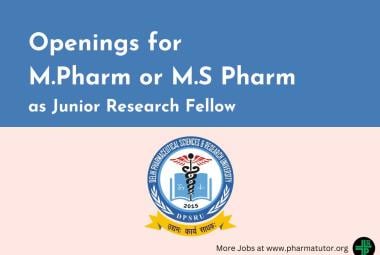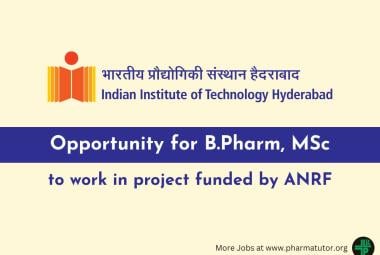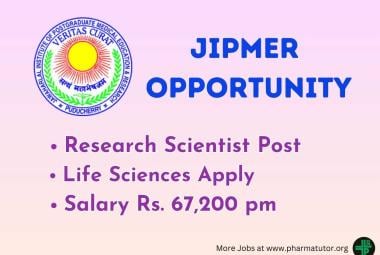About Authors:
*Virendra Sharma, Pooja Sinoriya, Sunil Sharma
Lakshmi Narain Academy of Pharmacy, Gwalior
Kumud23@indiatimes.com
Abstract
To evaluate the anti-inflammatory and analgesic activity of methanolic extract of whole plant of Sida acuta in experimental animal models. Methanolic extract of whole plant of Sida acuta (MESA) (100, 200 and 400 mg/kg p.o.) was studied for its anti-inflammatory activity using Carrageenan induced rat paw edema animal model and analgesic activity at the same dose level using acetic acid induced writhing test and Hot plate analgesia in mice. The methanolic extract of whole plant of Sida acuta (MESA) (100, 200 and 400 mg/kg p.o.). The PI with indomethacin and Sida acuta in carrageenan induced paw edema at the dose level 400 mg/kg were 60% and 52.5% at the end of 5 hr. In the acetic acid induced writhing test, the extract at the dose level 400 mg/kg showed 83.78% inhibition of writhing. In radiant heat tail- flick method the extract at the dose 400 mg/kg showed reaction time 4.902 ± 0.545 (p<0.001). The methanolic extract possesses anti-inflammatory and analgesic activity.
[adsense:336x280:8701650588]
Reference Id: PHARMATUTOR-ART-1396
Introduction
Inflammation is a local response of living mammalian tissues to injury. It is a body defense reaction in order to eliminate or limit the spread of injurious agent. There are various components to an inflammatory reaction that can contribute to the associated symptoms and tissue injury. Edema formation, leukocyte infilteration and granuloma formation represent such components of inflammation.[1] Aging is also considered to be inflammatory response. There are several tissue factors or mechanisms that are known to be involved in the inflammatory reactions such as release of histamine, bradykinin and prostaglandins.[2] Currently available anti-inflammatory agents are associated with unwanted side effects and have their own limitations. About 34-46% of the users of NSAIDs usually sustain some gastrointestinal damage due to the inhibition of the protective cyclo-oxygenase enzyme in gastric mucosa.[3] Therefore, new anti-inflammatory and analgesic drugs lacking these side effects are being researched as alternatives to NSAID and opiates. Attention is being focused on the investigation of the efficacy of plant based drugs used in the traditional medicine because they are cheap, have little side effects and according to WHO, about 80% of the world population still rely mainly on herbal remedies.[4,5,6]
Sida acuta Burm (family- Malvaceae) is a small herb which is widely distributed in hotter parts of India. The Plant is native to Mexico and Central America but has spread throughout the tropics and subtropics.[7] It is used in alternative system of medicine as bitter tonic, diuretic, in nervous and urinary diseases, disorders of bile, chronic bowel complaints and in the rheumatic affections. It is also used in the treatment of intestinal worms, cures fever and headache.[8, 9, 10, 11] Several phytochemical screenings resulted in the isolation of various compounds from the plant involving alkaloids and steroidal compounds.[12] The main alkaloids are cryptolepineand its derivatives such as quindoline, quindolinone, cryptolepinone and 11-methoxy-quindoline. The major steroids of the plant are ecdysterone, beta-sitosterol, stigmasterol, ampesterol. Phenolic compounds such as evofolin A and B, scopoletin, vomifoliol, loliolid and 4-Ketopinoresinol have been isolated.[13] The plant is reported to have antifertility activity[14], antibacterial activity [15], anti-inflammatory, hepatoprotective activity [16], traditional healing for snakebites [17] and antihepatotoxic actions.[18] The present study was undertaken to evaluate anti-inflammatory and analgesic activity of methanolic extract of whole plant of S. acuta (MESA).
Materials and Methods
Plant Material
The selected plant were collected from Jorasi and Malanpur village Dist. Gwalior and were identified and authenticated by Mr. N.K. Pandey, Research officer (Botany) at Central Research Institute, Gwalior.
Drugs and Chemicals
All standard chemicals used in this study were of analytical grade. Indomethacin and carrageenan were obtained from Sigma-Aldrich, Germany. Acetic acid was obtained from Merck, Germany.
Preparation of extract
The collected plants were air-dried at room temperature, pulverized by a mechanical grinder sieved through 40 mesh. The powered materials (approx. 150 gm) were extracted with ethanol using soxhlet extraction apparatus. This ethanolic extract was then extraction apparatus and dried under reduced pressure. The extractive yield was found to be 13.02%. The ethanol free semi solid mass thus obtained was used for the experiment.[19]
Animals
Albino Wistar rats of either sex weighing 220-280 g and Swiss albino mice weighing 25-30 g were used for the assessment of pharmacological evaluation of methanolic extract of Sida acuta and Sida rhombifolia wherever necessary. Animals were procured from Defense Research and Development Establishment, Gwalior and maintained at Central Animal Facility of the Department. They were maintained at standard environmental condition (Relative humidity 55-65%, room temperature 25±2°C and 12 h light/ dark cycle) and were fed standard pellet diet and water ad libitum. Each experimental group consisted of five animals, housed in separate cages. All experimental protocols were approved by Institutional Animal Ethical committee of the Institute (approved by CPCSEA Regd. No. 716/02/a/CPCSEA).
Acute oral toxicity study of extract
The limit test for acute toxicity was carried out at 2000 mg/kg oral dose of MESA and MESR in rats as per OECD 423 guidelines.[20] The rats were observed continuously for 2h for behavioral, neurological and autonomic profiles and, after a period of 24 and 72 h, for any lethality, moribund state or death.
Assessment of Anti-inflammatory activity Carrageenan induced paw oedema in rat
The animals were divided into five groups of five albino wistar rats each (n=5). Acute paw oedema (Acute inflammation) was induced by sub-plantar injection of 0.1 ml of 1% freshly prepared carrageenan suspension in normal saline into the right hind paw of each rat. The left hind paw was injected with same volume of 0.1% of normal saline. Rats were pretreated with Vehicle or MESA or aspirin 1 hr before carrageenan administration. The paw size was measured in mm using Plethysmometer at 1st and 3rd h after carrageenan administration. The percent inhibition was calculated by following formula.
Percentage Inhibition = Vc - Vt / Vc *100
Where, VC = Mean increase in paw volume in control group
Vt = Mean increase in paw volume in test group [21]
NOW YOU CAN ALSO PUBLISH YOUR ARTICLE ONLINE.
SUBMIT YOUR ARTICLE/PROJECT AT articles@pharmatutor.org
Subscribe to PharmaTutor Alerts by Email
FIND OUT MORE ARTICLES AT OUR DATABASE
Assessment of Analgesic activity
Acetic acid induced writhing test
Writhing is defined as stretch, torsion to one side and retraction of the abdomen and opisthotonous so that the belly of the mouse touches to the floor. The test was conducted on five groups of five mice each. Abdominal writhing episodes were induced in mice by i.p. injection of acetic acid (10 ml/kg of 0.6 % acetic acid). Mice were pretreated with vehicle or MESA or indomethacin 1 h prior to acetic acid injection and thereafter the observations were made. The number of stretching occurred for 30 min. immediately after the acetic acid injection was recorded. The mean number of stretching per group were calculated and represented as % inhibition of stretching movement with control group as below.
% Analgesic activity = (n′-n/n) ×100
Where, n is the average no of stretching of control group and
n′ is the average no of stretching in test group [2]
Hot plate analgesia in mice
The test was conducted on five mice groups of five mice each. The mice were placed on hot plate maintained at 55±1°C and time in seconds for the paw licking or jumping was recorded as the reaction time. Mice which have shown basal reaction time period below 6 seconds were selected and used for the screening. Mice were fasted for 12 h before test to be started. Mice were pretreated with vehicle or MESA or MESR or pentazocin (10 mg/kg i.p.). The mouse activity on hot plate was closely observed and the reaction time (latency period) was recorded in seconds as the time taken for the animal to react to the thermal pain by licking its paw or attempting to jump out. [22]
Statistical analysis
The data were analyzed by one way ANOVA followed by Dunnett’s multiple comparison post hoc test using Graph Pad Prism 5, software (Graph Pad Software Inc, USA). The difference of p<0.05 was considered significant in all the cases.
Results
Acute oral toxicity study
Acute oral toxicity studies revealed that the both the extracts MESA and MESR were safe up to a dose level of 2000 mg/kg of body weight (limit test) and LD50 is more than 2000mg/kg. No lethality or any toxic reactions or moribund state were observed up to the end of the study period.
Assessment of Anti-inflammatory activity
One-way repeat measure ANOVA showed significant (p<0.0001) influence of MESA and MESR on carrageenan-induced inflammation. Dunnett’s test indicated MESA at 400 mg/kg caused significant (p<0.01) decrease in paw oedema compared to vehicle while lower dose 100 mg/kg did not show any effect. MESA 400 mg/kg produced a reduction in paw oedema (58.28 %) as shown in table 1.
Assessment of Analgesic activity
Effect of MESA on acetic acid induced writhing
One-way ANOVA showed significant (p<0.001) influence of MESA on acetic acid induced writhing compared to control. Post hoc Dunnett’s test showed that MESA at 400 mg/kg caused significant inhibition of writhing (p>0.05). The maximum inhibition was noted for MESA 400mg/kg (83.78%). The effects were comparable with that of reference standard, indomethacin that showed 78.97% inhibition of writhing (p<0.001) as shown in Table 1.
Effect of MESA on hot plate analgesia
One-way repeat measure ANOVA exhibited significant (P<0.001) influence of MESA on hot plate reaction time. Dunnett’s test showed that for MESA at 400 mg/kg showed significant (P<0.01-0.001) increase in reaction time but the dose of 100 mg/kg did not produce any effect compared to control (P>0.05). The effects very much comparable with pentazocin 10 mg/kg that showed increase (P<0.001) in reaction time from 3.51 to 7.88 sec. at the end of 150 min as shown in table 2.
Table 1. Effect of MESA and MESR on carrageenan-induced rat paw edema
|
Ø Treat |
Ø Change in Paw oedema (mm) |
Ø |
Ø |
ØAcetic acid-induced writhing response in mice |
|||
|
Ø 1st hr |
Ø 3rd hr |
Ø 5th hr |
No. of writhing episodes |
% inhibition of writhing |
|||
|
Control |
0.68 ±0.022 |
0.76 ±0.031 |
0.80 ±0.042 |
----- |
----- |
66.60 ± 6.84 |
- |
|
MESA |
0.57 ±0.035 |
0.62 ±0.021 |
0.64 ±0.014 |
18.42 |
20.00 |
63.20 ± 5.44 |
5.10% |
|
MESA |
0.36 * ±0.010 |
0.42 * ±0.042 |
0.48 * ±0.015 |
44.73 |
40.00 |
43.60 ± 4.17* |
34.98% |
|
MESA |
0.32 * ±0.011 |
0.35 * ±0.008 |
0.38 * ±0.020 |
53.94 |
52.5 |
10.80 ± 1.24** |
83.78% |
|
IND |
0.22* ±0.020 |
0.28* ±0.020 |
0.32* ±0.038 |
63.15 |
60.00 |
14.0 ± 1.81** |
78.97% |
Values are means± S.E.M for five animals.
*P<0.001,**P<0.001, compared to vehicle control
Table 2. Effect of MESA on hot plate analgesia
|
Treatment mg/kg |
Hot plate reaction time (sec.) |
|||||
|
|
0 min |
30 min |
60 min |
90 min |
120 min |
150 min |
|
MESA 100 |
3.822 ± 0.511 |
3.820 ± 0.482 |
3.964 ± 0.698 |
4.400 ± 0.847 |
5.094 ± 0.716 |
4.938 ± 0.541 |
|
MESA 200 |
4.124* ± 0.775 |
4.904* ± 0.868 |
4.896* ± 0.533 |
6.258* ± 1.056 |
5.890 * ± 0.905 |
4.980* ± 0.789 |
|
MESA 400 |
3.960** ± 0.487 |
4.902** ± 0.545 |
5.438** ± 0.484 |
5.912** ± 0.426 |
6.328** ± 0.699 |
5.956** ± 0.397 |
|
Pentazocin 5 |
3.518** ± 0.155 |
4.330** ± 0.129 |
5.622** ± 0.063 |
6.120** ± 0.077 |
7.062** ± 0.236 |
7.884** ± 0.078 |
Values are mean ± S.E.M of five mice.
*P<0.01, **P<0.001, compared to control group.
Discussion
Inflammation is a tissue-reaction to infection, irritation or foreign substance. It is a a part of the host defence mechanism but when it becomes great it is a hopeless condition. Carrageenan induced rat paw edema is commonly used as an experimental animal model for evaluation of anti-inflammatory potential of natural products and is believed to be biphasic.[22] The present study revealed that revealed that methanolic extract of whole plant of Sida acuta significantly suppressed the carrageenan challenge due to the inhibition of the enzyme cyclo-oxygenase and subsequent inhibition of prostaglandin synthesis. Various chemical constituents of plant origin such as beta-sitosterol, ephedrine, heraclenin, scopoletin are reported to have anti-inflammatory activity. The constriction response of abdomen produced by acetic acid is a sensitive procedure for peripheral analgesic agents. This response is believed to be mediated by the prostaglandin pathways.[23] The methanolic extract of Sida acuta have analgesic effects and thus indicates the presence of analgesic components that might influence the prostaglandin pathways. In the radiant heat tail flick test, the extract prolonged the stress tolerance capacity of the mice, indicating the possible involvement of a higher center.[24]
In conclusion, this work has demonstrated that extract from the whole plant of Sida acuta exhibited anti-inflammatory and analgesic activities. But the exact mechanism by which S. acuta exerts its anti-inflammatory and analgesic activity is not determined yet and needs further investigation to elucidate the other active compounds and underlying mechanism(s).
References
1. Mitchell RN and Cotran RS. In; Robinsons Basic Pathology. 7th edi. Harcourt (India) Pvt. Ltd. New Delhi. 2000.p.33.
2. Kulkarni SK. Handbook of experimental pharmacology. In: Jain MK, editor. 3rd ed. Delhi: Vallabh Prakashan.2002.p.128.
3. Rang HP, Dale MM, Ritter JM and Flower RJ. Anti-inflammatory and immunosuppressant drugs. Textbook of Pharmacology. 6th ed.Elsevier publications. 2008. p.226-45.
4. Li RW, Mayers SP, Leach DN, Lin GD, Leach G. A cross cultural study: Anti-inflammatory activity of Australian and Chinese plants. J of Ethanopharmacol. 2003; 85:25-32.
5. Dharmasiri JR, Jayakody AC, Galhena G, Liyanage SSP, Rathasooriya WD. Anti-inflammatory and analgesic activity of mature fresh leaves of Vitex negundo. J of Ethanopharmacol. 2003;87:199-206.
6. Kumara NKVMR. Identification of strategies to improve research on medicinal plants used in Srilanka. 2001. p.12-14
7. Karoa SD, Nadembega WMC, IIboudo D, Quermi D, Gbeassor M, De Souza C and Jacques Simpore. Sida acuta Burm f: A medicinal Plant with numerous potencies. African J of Biotechnology. 2007;6(25):2953-2959.
8. Krishnamurthi A and Chada YR (eds). Wealth of India. Publication and Information Directorate, CSIR, New Delhi. 9th ed. 1972. p. 322-26
9. Nadkarni KM. Indian Materia Medica. Popular Prakashan, Mumbai. 1993;1:1134-35.
10. Kiritikar KR and Basu BD. Indian Medicinal Plants. International Book distributors, Dehradun, India. 1995. p. 308-9
11. Ahmad Moghos U, Hussain SK, Ahmed M, Ooman SM and Subbaro R. Cycloprenoid FA in seed oils Sida acuta and Sida rhombifolia (Malvaceae). J Am. Oil Chem. Soc. 1976;53:698-99.
12. Cao JH and Qi YP. Studies on the chemical constituents of the herb huanghuaren (Sida acuta Burm f.) Zhongguo Zhong Yao Za Zhi. 1993;18:681-82.
13. Jang DS, Park EJ, Kang YH, Su BN, Hawthrone ME, Vigo JS, et al. Compounds obtained from Sida acuta with the potential to induce quinine reductase and to inhibit 7, 12-dimethylbenz[a] anthracene-induced preneoplastic lesions in a mouse mammary organ culture model. Arch. Pharmacol. Res. 2003;26:585-90.
14. Kholute SD, Munshi SR, Naik SD and Jathar VS. Antifertility activity of indigenous plants Sida carpinifolia Linn and Podocarpus brevifolius stapf in female rats. Indian J Exp Bio 1978;16:696-98.
15. Sushil kumar, Bagchi GD, Darokar MP and Kumar S. Antibacterial activity observed in the seeds of some corpophilous plants. Int J Pharmacog. 1997;35:179-184.
16. Kurma Rao and Mishra SH. Anti-inflammatory activity and hepatoprotective activities of Sida acuta. Indian drugs.1998;35:92-97.
17. Otero R, Nunez V, Jimenenz SL, Fonnegra R, Osorio RG, Garcia ME and Diaz A. Snakebites and the ethnobotany in the northwest region of Colombia. Part II: neutralization of lethal and enzymatic effects of Bothrops Otrox venom. J Ethnopharmacol. 2000;71:501-11.
18. Yang LL, Yen KY, Yoshinobu Kiso and Hiroshi Hikino. Antihepatoxic actions of Formosan plant drugs. J Ethnopharmacol. 1987;19:103-110.
19. Harbone JB. Phytochemical methods. Chapman and Hall, London. 1998. p. 4-32.
20. OECD (Organization for economic co-operation and development ) Harmonized integrated hazard classification system for human health and environmental effects of chemical substances. Paris:OECD;1998.
21. Winter CA, Risley EA and Nuss GW. Carrageenan induced edema in hind paw of the rat as an assay for anti-inflammatory drugs. Proc Soc Exp Bio Med. 1962;111:544-547.
22. Whittle BA. The use of changes in capillary permeability in mice to distinguish between narcotic and non-narcotic analgesics. Br J Pharmacol Chemotherp. 1964;22:246-53.
23. Ronaldo AR, Mariana LV, Sara MT, Adriana BPP, Steve P, et al. Involvement of resident macrophages and mast cells in the writhing nociceptive response induced by zymosan and acetic acid in mice. Eur J Pharmacol. 2000;387:111-18.
24. Whittle BA. The use of changes in capillary permeability in mice to distinguish between narcotic and non-narcotic analgesics. Br J Pharmacol. Chemotherp. 1964;22:246-253.
NOW YOU CAN ALSO PUBLISH YOUR ARTICLE ONLINE.
SUBMIT YOUR ARTICLE/PROJECT AT articles@pharmatutor.org
Subscribe to PharmaTutor Alerts by Email
FIND OUT MORE ARTICLES AT OUR DATABASE









